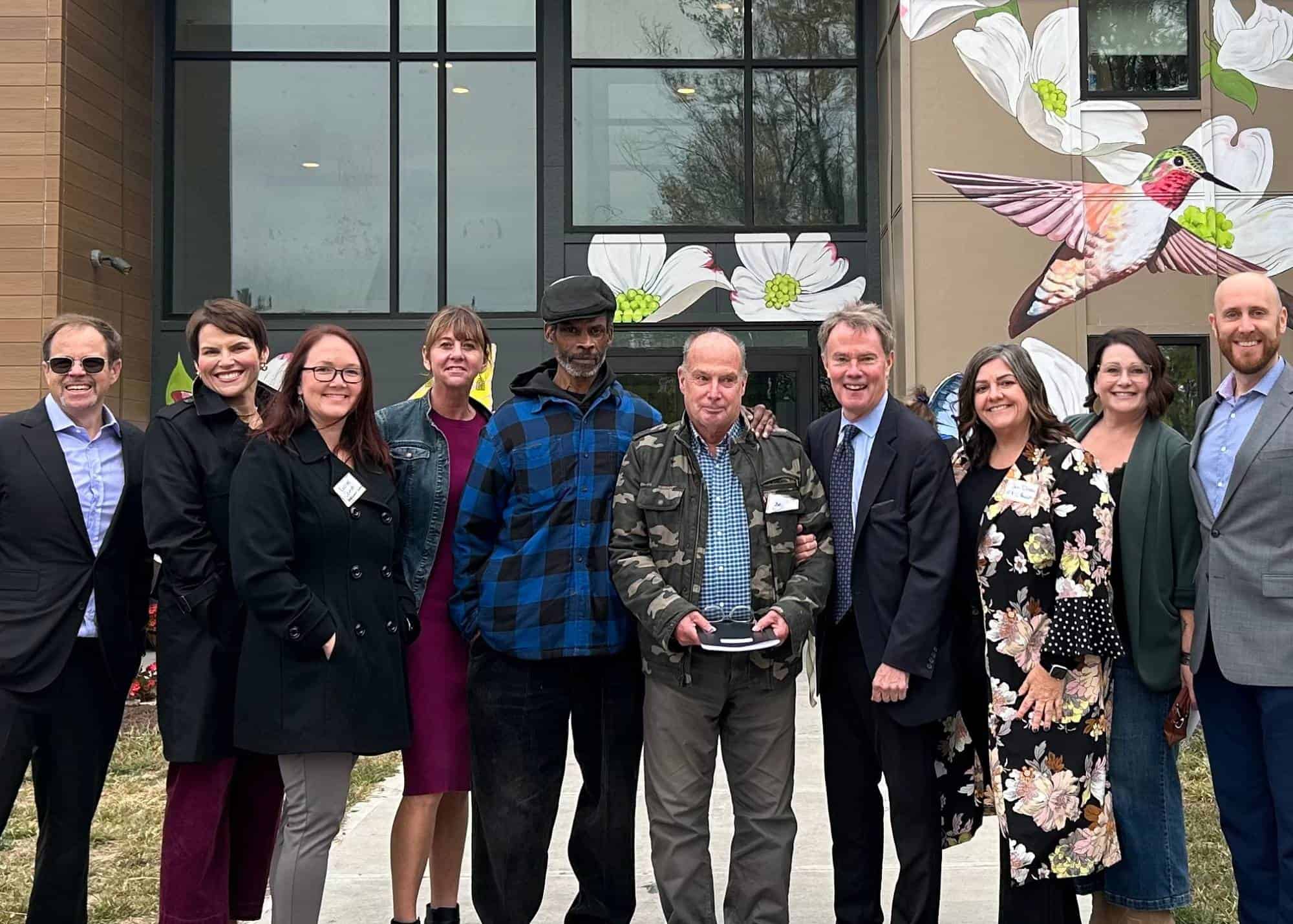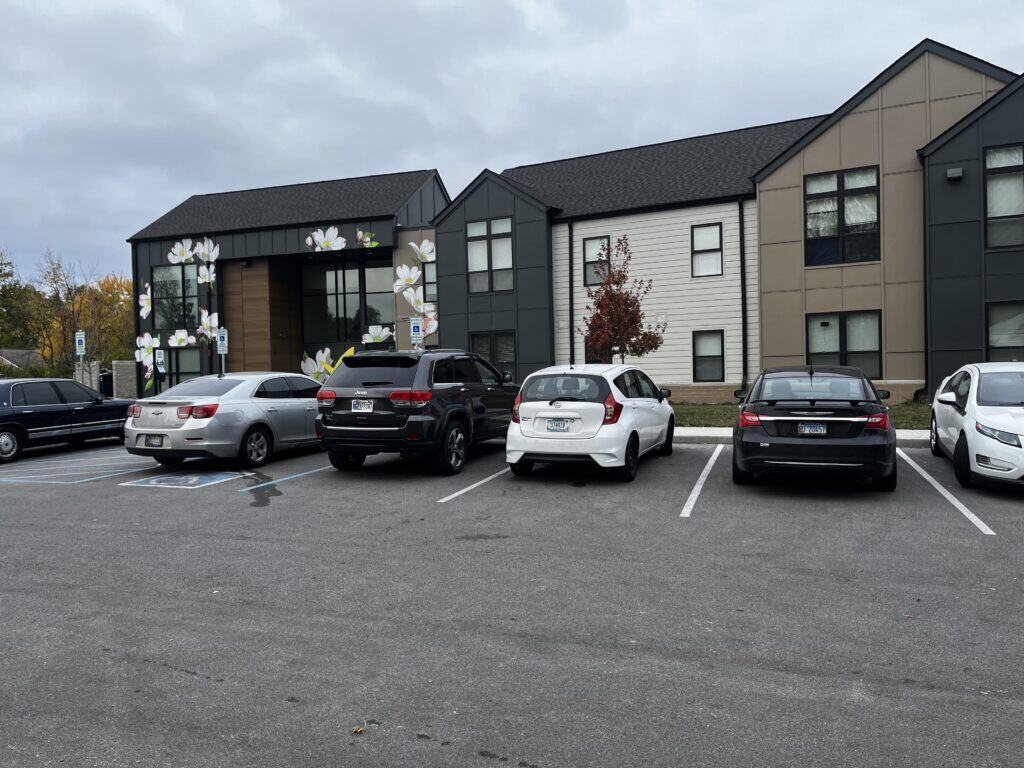
Housing First Works: Hanna Commons Marks Two Years of Transforming Lives
With 92 percent of residents remaining stably housed, partners celebrate a model that’s proving effective in Indianapolis
(As part of the Indianapolis Foundation’s commitment to housing equity and community well-being, partners across the city gathered to celebrate a Housing First model that is changing lives).
Two years after opening its doors, Hanna Commons, located in South Indianapolis, has become a proven example of how the Housing First model can transform lives and neighborhoods. The 55-unit supportive housing community, developed to serve individuals transitioning from chronic homelessness, has achieved a 92 percent housing-stability rate — a milestone celebrated by residents, city leaders, and community partners during its second-anniversary event.
“This approach works. It's not easy, but it works,” said Jessica Hoff Berzac, president of UpHoldings, the developer and property manager. She credited community partners, including Keep Indianapolis Beautiful, AES Indiana’s Project Greenspace, and Sheil Sexton Construction, for their hands-on investment with developing a pocket park. “Over 160 volunteers came out in one day to say, ‘We care about the people who live here. We care about this city. Let’s make it beautiful.’”
Berzac also highlighted a new mural created in partnership with the Indy Arts Council, describing it as “a process that gave residents a deeper connection to their space and to one another.” Reflecting on the project’s success, she added, “Permanent supportive housing does work.”
Rachael Sample, Senior Community Leadership Officer for Housing Equity at the Indianapolis Foundation, said the milestone illustrates what’s possible through partnership. “I remember when this project was just a line on a list,” she said. “To see it here now, with beautiful art and community, is inspiring and reminds us why we do this work.”
Sample noted that the Foundation’s Housing to Recovery Fund, launched in partnership with the City of Indianapolis, CHIP, and the Corporation for Supportive Housing, has served more than 380 households since 2020 with a 97 percent stability rate. “It’s the delivery of the Housing First doctrine … connecting people to quality services and support that last,” she said.

Mayor Joe Hogsett praised the community as a model of what’s possible when housing and care come together. “I know it is hard work, but it is also God’s work here on Earth,” he said. “There’s nothing more important than having residents of our city have housing opportunities … somewhere to call home, a roof over their head, shelter.”
Chelsea Haring-Cozzi, CEO of the Coalition for Homelessness Intervention and Prevention (CHIP), called the day “a reminder of why we keep going.” She noted that on a single night, about 1,800 people in Indianapolis experience homelessness. “The good news is we know what needs to be done,” she said. “We need to expand and scale housing and services. We need high-quality, permanent supportive housing and stay focused on the things we know work. We see it right here in our community.”

Kelli Mirgeaux, president of Southeast Neighborhood Development (SEND), reflected on the project’s origins and outcomes. “When Hanna Commons broke ground in 2022, this was just an idea … a vision to provide permanent supportive housing that would reflect our collective belief that everyone deserves a safe, dignified place to call home,” she said. “At Hanna Commons, 100 percent of residents have participated in support services, and 80 percent have followed up with a primary-care doctor. These outcomes are proof that when partners collaborate and center dignity, lives change.”
Matt Rayburn, deputy executive director at the Indiana Housing and Community Development Authority, commended the project’s teamwork. “Supportive housing developments like Hanna Commons combine quality, affordable housing with accessible and tenant-centered services,” he said. “Those outcomes … 100 percent service engagement and 92 percent housing stability … are more than numbers. They represent individual lives that have been touched by this project.”
Jennifer Disbro, vice president of Community Health and Social Services, Adult & Child Mental Health, shared outcomes from the site’s integrated-care model. “One hundred percent of residents have access to support services; 80 percent attend regular medical visits, and 50 percent are enrolled in mental-health treatment,” she said. “Less than six percent have new involvement with the justice system. These results show what’s possible when housing and healthcare come together with compassion and commitment.”
Two residents, Brian Scott and Donald Howell, followed with personal reflections.
Scott, who became homeless after a traumatic accident in 2015, said moving into Hanna Commons helped him heal. “The car wreck was devastating. I was broadsided at high speed while I was on a bicycle. It was very, very traumatic,” he said. “It was through Wheeler (Mission) that I was able to find Hanna Commons. I’m absolutely thrilled with it. There is so much support for people who are going through a lot of trauma, including mental health support systems.”
“Every time I put a plant in the garden, I felt myself getting stronger,” added Scott, who enjoys spending time tending the community garden.
Howell, among the first residents to move into the apartment building, told the gathering, “I really appreciate my change of zip code. I was one of those people who was chronically homeless, and now I can walk around my apartment eating a bowl of Captain Crunch. It’s been a great beginning, and I’m not going anywhere.”
As the celebration closed, partners reaffirmed their shared goal of expanding permanent supportive housing across Indianapolis.
(Main photo, from left to right: Cullen Davis and Jessica Hoff Berzac (UPHoldings), Rachael Sample (Indianapolis Foundation), Kelli Mirgeaux (SEND), Donald Howell and Brian Scott (Hanna Commons tenants), Indianapolis Mayor Joe Hogsett, Jennifer Disbro (Adult & Child), Chelsea Charing-Cozzi (CHIP), and Matt Rayburn (IHCDA).